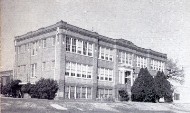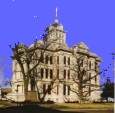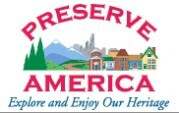Milam County Historical Commission
Milam County, Texas
All credit for these articles go to
Susie Sansom-Piper and
the Rockdale Reporter
Milam County, Texas
All credit for these articles go to
Susie Sansom-Piper and
the Rockdale Reporter






ON THE OTHER SIDE OF THE TRACKS, SERIES 5, PART 1
A roll call of Rockdale’s black women
By Susie Sansom-Piper
Rockdale Reporter - February 2, 2012
Editor’s note: The fifth edition of Susie Sansom Piper’s Black History Month series “On The Other
Side of the Tracks” looks back at notable African-American women in Rockdale’s history.
The unpaved streets, outdoor toilets, houses without electricity and limited
transportation that existed in most small towns during the 1920s and 1930s can still be
visualized by those persons who yet remain.
There was limited education, maybe confined to completing elementary, middle school
grades or tenth grade, with hopes of having enough finance to obtain a rooming place and
transfer to the Cameron Colored School, which carried 11 grades.
Yet there existed a great essence of community pride and a desire to make surroundings
acceptable and useful.
This series gives special recognition to black women of Rockdale who contributed and made
a lasting impact on the city. It w ill include native-born Rockdalians and those who in
later years became an important part of the city.
Kate Walton - Midwife who delivered many of the city’s and rural babies for those who
could not afford a physician. She was also well known for ear piercing, using only needle
and thread, a cork and a bit of turpentine.
Viola Mitchell - First known hairdresser in the city. She used a lamp fitted with a wire
hook across the chimney, or wood stove, straightening comb and curling iron. Most early
beauticians also made hair ointment in those days.
Lula Moseley - One of the first faculty members at the Rockdale Colored School, later
named Aycock. She also wrote the first history of the school, some of which is used today
with added information.
Gladys Shields - A first known telephone operator at Prairie View Normal and Industrial
School.
Mable Tindle - Teacher in the Liberty Hill area near Rockdale. She was among the first
of the town to introduce garage sales. She often traveled to other small towns to sell
her vast collection of used clothes, etc.
Clemmie Goins - A devout church worker, giver of vast property surrounding New Hope
Baptist Church. She served the Parent-Teacher Association at Aycock for many years and
was instrumental in raising much of the finances used by the school for extracurricular
activities.
Lillie Johnson, Ardie Judy, Pearl Davis, Minnie Fair Mullins, Earnestine Mays and
Eva Morgan - Comprised two well-known gospel singing groups who furnished special music
for religious occasions.
Ella J. Beals - Also a first teacher in Rockdale Colored School. She and her husband
owned Beals Grocery Store. She established the first known kindergarten in her home. It
was not state-regulated, but provided early learning skills for the four and five-year-
olds.
Granny Carrie Randolph - She played the piano for New Hope Sunday School and Baptist
Training Union for so long, until her fingers were so stiff that they were unable to
manipulate the keys properly. Her music was always unique to teenagers.
Bessie Shields Beals - A very talented seamstress who “could make anything out of
nothing.” She designed paper costumes for school operettas and also designed and made the
first majorette costumes for the Aycock Band.
Eva Morgan, Eula Bell Moultry, Area Nelson - Other well-known seamstresses during the
era. All of these ladies were capable of making their own patterns from photos.
Etta Mae Cartwright- Walton, Lucy Mae Brooks, Eula Bell Moultry - The first blacks
to broadcast on radio in Milam County.
Cleo Burley Moultry - The first well-known chef cook in Rockdale. She worked for many
years downtown in the former Mrosko Cafe.
Courtney Cummings, Mittie Allen - Musicians at Allen Chapel AME Church.
Willie James Cooper - Sang in the local jazz orchestras.
Earnestine Mays - Became well known on school talent shows for her rendition of “Rag
Mop.”
.